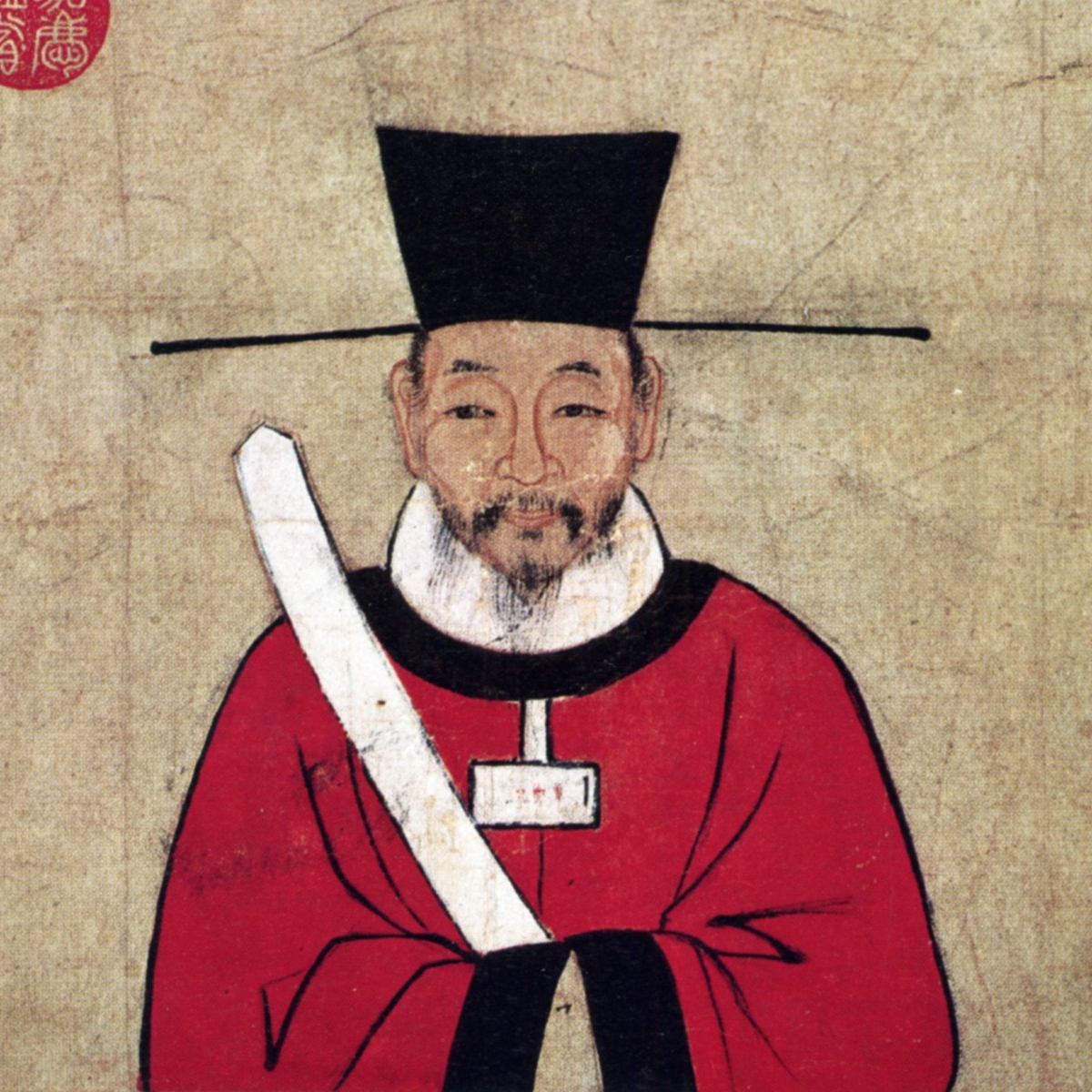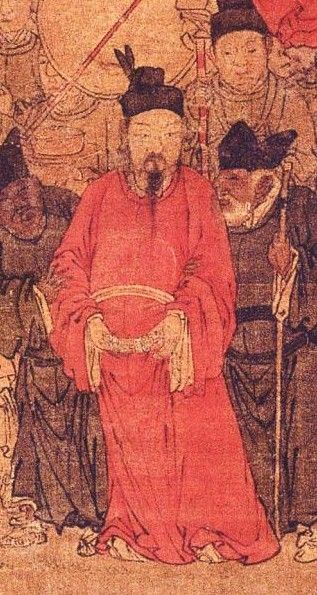|
Li Ying (prince)
Li Ying (李瑛) (died June 737), né Li Siqian (李嗣謙), known from 725 to 736 as Li Hong (李鴻), was a crown prince of the Chinese Tang dynasty during the reign of his father Emperor Xuanzong. He was later removed and forced to commit suicide due to the machinations of Emperor Xuanzong's favorite and influential concubine Consort Wu and her powerful and corrupt ally, the chancellor Li Linfu. Background It is not known when Li Siqian was born, but it is known that he was the second son of Li Longji, then the Prince of Linzi under Li Longji's uncle Emperor Zhongzong. His mother Consort Zhao, who would eventually receive the imperial consort rank of ''Lifei'' (麗妃), the second highest rank for imperial consorts,''Old Book of Tang''vol. 51. was said to be a prostitute who was capable in singing and dancing, and who became a concubine of Li Longji's when Li Longji was serving as the secretary general for Lu Prefecture (潞州, roughly modern Changzhi, Shanxi), in 708 ... [...More Info...] [...Related Items...] OR: [Wikipedia] [Google] [Baidu] |
Emperor Xuanzong Of Tang
Emperor Xuanzong of Tang (; 8 September 685 – 3 May 762), personal name Li Longji, was an Emperor of China, emperor of the Tang dynasty of China, reigning from 712 to 756. His reign of 44 years was the longest during the Tang dynasty. Through two palace coups, he seized the throne and inherited an empire still in its golden age. He was initially assisted by capable chancellors like Yao Chong, Song Jing and Zhang Yue (Tang dynasty), Zhang Yue who were already serving as government officials before Xuanzong ascended the throne. However, under Emperor Xuanzong, the empire reached its turning point and went into sharp decline and near collapse, due to numerous political missteps throughout his long reign, such as over-trusting chancellors Li Linfu, Yang Guozhong and general An Lushan, with Tang's golden age (metaphor), golden age ending in the An Lushan rebellion. Background Li Longji was born at the Tang dynasty eastern capital Luoyang in 685, during the first reign of his fat ... [...More Info...] [...Related Items...] OR: [Wikipedia] [Google] [Baidu] |
Emperor Wu Of Han
Emperor Wu of Han (156 – 29 March 87BC), born Liu Che and courtesy name Tong, was the seventh Emperor of China, emperor of the Han dynasty from 141 to 87 BC. His reign lasted 54 years – a record not broken until the reign of the Kangxi Emperor more than 1,800 years later – and remains the record for ethnic Han Chinese, Han emperors. His reign resulted in a vast expansion of geopolitical influence for the Sinosphere, Chinese civilization, and the development of a strong centralized state via governmental policies, economical reorganization and promotion of a hybrid legalism (Chinese philosophy), Legalist–Confucianism, Confucian doctrine. In the field of historical social and cultural studies, Emperor Wu is known for his religious innovations and patronage of the poetic and musical arts, including the development of the Music Bureau, Imperial Music Bureau into a prestigious entity. It was also during his reign that cultural contact with western Eurasia was greatly incre ... [...More Info...] [...Related Items...] OR: [Wikipedia] [Google] [Baidu] |
737 Deaths
Year 737 ( DCCXXXVII) was a common year starting on Tuesday of the Julian calendar. The denomination 737 for this year has been used since the early medieval period, when the Anno Domini calendar era became the prevalent method in Europe for naming. Events By place Europe * Battle of Avignon: Frankish forces under Charles Martel, Merovingian Mayor of the Palace, retake Avignon from the Muslim forces, and destroy the Umayyad stronghold. Charles sends his brother Childebrand I, duke of Burgundy, to besiege the city. After his arrival, Charles leads the Frankish troops by using rope ladders and battering rams to attack the fortified walls, which are burned to the ground following its capture. * Battle of Narbonne: Frankish forces under Charles Martel besiege Narbonne, occupied by a Umayyad garrison, but are unable to retake the fortress city. A Lombard army under King Liutprand crosses the Alps, to aid Charles in expelling the Muslims from Septimania. Meanwhile Mau ... [...More Info...] [...Related Items...] OR: [Wikipedia] [Google] [Baidu] |
Tang Dynasty Imperial Princes
Tang or TANG most often refers to: * Tang dynasty * Sour taste Tang or TANG may also refer to: Chinese states and dynasties * Jin (Chinese state) (11th century – 376 BC), a state during the Spring and Autumn period, called Tang (唐) before 8th century BC * Tang dynasty (唐; 618–907), a major Chinese dynasty * Later Tang (唐; 923–937), a state during the Five Dynasties and Ten Kingdoms period * Southern Tang (唐; 937–975), a state during the Five Dynasties and Ten Kingdoms period Food * Tang (drink mix), a brand name of instant fruit flavored drinks, produced by Mondelēz International * Guk (국), soup or stew in Korean cuisine, sometimes known as "tang" (탕; 湯) Places Europe * Tang, County Westmeath, a village in Ireland * Tang, North Yorkshire, a settlement in England Asia * Tang, Ardabil, a village in Ardabil Province, Iran * Tang, Badakhshan, a village in Afghanistan * Tang, a village in Bumthang District, Bhutan * Tang (唐镇), a town in Pudong, Sha ... [...More Info...] [...Related Items...] OR: [Wikipedia] [Google] [Baidu] |
Zizhi Tongjian
The ''Zizhi Tongjian'' (1084) is a chronicle published during the Northern Song dynasty (960–1127) that provides a record of Chinese history from 403 BC to 959 AD, covering 16 dynasties and spanning almost 1400 years. The main text is arranged into 294 scrolls (), each equivalent to a chapter—totaling around 3 million Chinese characters. In 1065, Emperor Yingzong of Song commissioned his official, Sima Guang (1019–1086), to lead a project to compile a Universal history (genre), universal history of China, and granted him funding and the authority to appoint his own staff. His team took 19 years to complete the work and in 1084 it was presented to Emperor Yingzong's successor Emperor Shenzong of Song. It was well-received and has proved to be immensely influential among both scholars and the general public. Endymion Wilkinson regards it as reference quality: "It had an enormous influence on later Chinese historical writing, either directly or through its many a ... [...More Info...] [...Related Items...] OR: [Wikipedia] [Google] [Baidu] |
New Book Of Tang
The ''New Book of Tang'', generally translated as the "New History of the Tang" or "New Tang History", is a work of official history covering the Tang dynasty in ten volumes and 225 chapters. The work was compiled by a team of scholars of the Song dynasty, led by Ouyang Xiu and Song Qi. It was originally simply called the ''Tangshu'' (唐書, Book of Tang) until the 18th century. History In Chinese history, it was customary for dynasties to compile histories of their immediate predecessor as a means of cementing their own legitimacy. As a result, during the Later Jin (Five Dynasties), Later Jin dynasty of the Five Dynasties and Ten Kingdoms period, a history of the preceding Tang dynasty, the ''Old Book of Tang'' () had already been compiled. In 1044, however, Emperor Renzong of Song ordered a new compilation of Tang history, based on his belief that the original ''Old Book of Tang'' lacked organization and clarity. The process took 17 years, being finally completed in 1060. ... [...More Info...] [...Related Items...] OR: [Wikipedia] [Google] [Baidu] |
Emperor Suzong Of Tang
Emperor Suzong of Tang (''yihai'' day, 711 – 16 May 762; r. 756 – 762), personal name Li Heng, né Li Sisheng (), known as Li Jun () from 725 to 736, known as Li Yu () from 736 to 738, known briefly as Li Shao () in 738, was an emperor of the Chinese Tang dynasty and the son of Emperor Xuanzong. Suzong ascended the throne after his father fled to Sichuan during the An Lushan Rebellion in 756; Li Heng himself had fled in the opposite direction, to Lingwu, where he was declared emperor by the army. Much of Emperor Suzong's reign was spent in quelling the aforementioned rebellion, which was ultimately put down in 763 during the reign of his son Emperor Daizong. During Emperor Suzong's reign, the tradition of eunuchs becoming top-ranked officials began, with Li Fuguo becoming the commander of the imperial guards and possessing nearly absolute power near Emperor Suzong's reign. Li Fuguo allied and befriended Emperor Suzong's wife, Empress Zhang, at the beginning of Emp ... [...More Info...] [...Related Items...] OR: [Wikipedia] [Google] [Baidu] |



